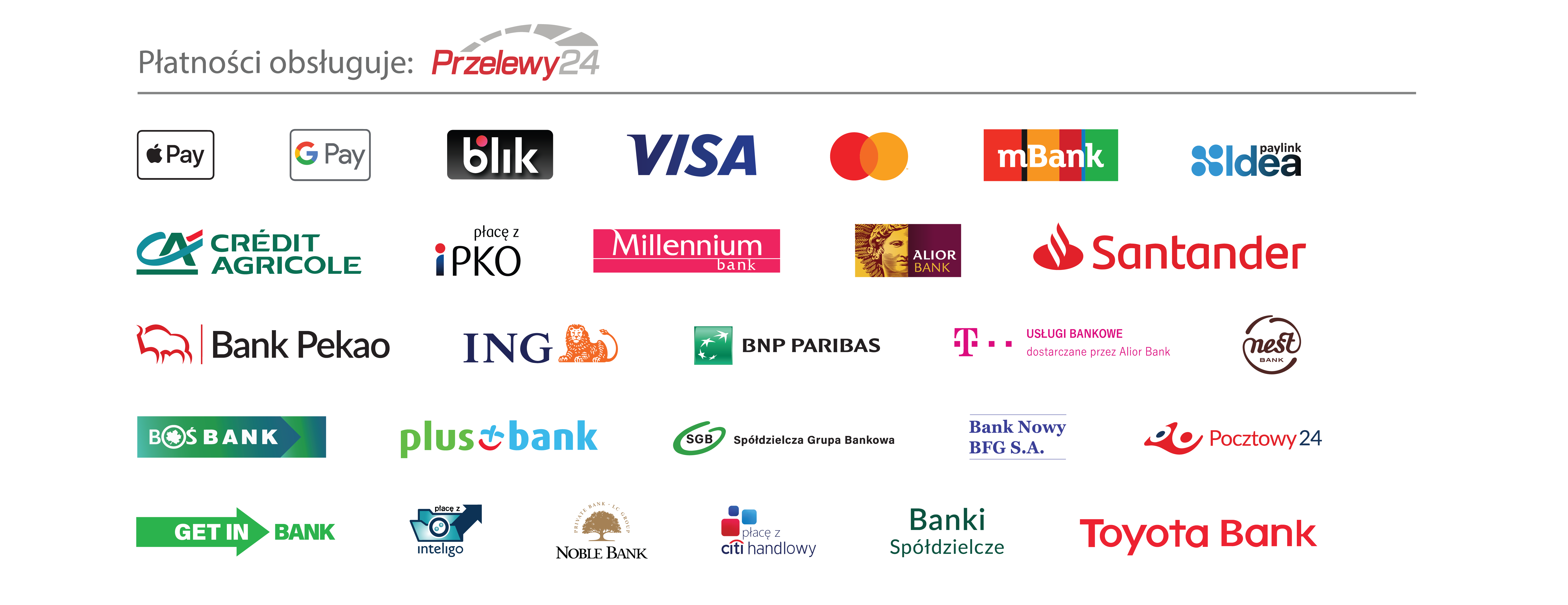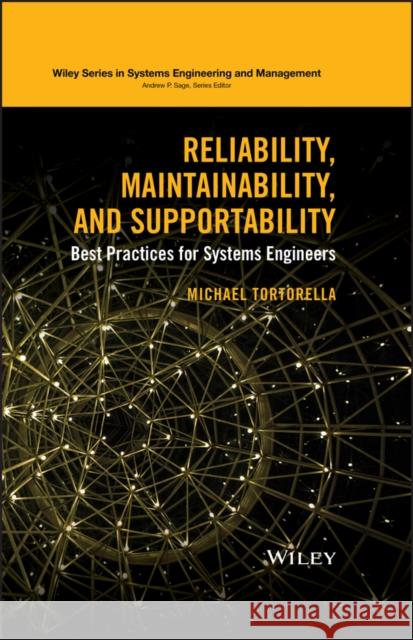Reliability, Maintainability, and Supportability: Best Practices for Systems Engineers » książka



Reliability, Maintainability, and Supportability: Best Practices for Systems Engineers
ISBN-13: 9781118858882 / Angielski / Twarda / 2015 / 464 str.
Reliability, Maintainability, and Supportability: Best Practices for Systems Engineers
ISBN-13: 9781118858882 / Angielski / Twarda / 2015 / 464 str.
(netto: 662,02 VAT: 5%)
Najniższa cena z 30 dni: 625,43 zł
ok. 16-18 dni roboczych.
Darmowa dostawa!
Focuses on the core systems engineering tasks of writing, managing, and tracking requirements for reliability, maintainability, and supportability that are most likely to satisfy customers and lead to success for suppliers
This book helps systems engineers lead the development of systems and services whose reliability, maintainability, and supportability meet and exceed the expectations of their customers and promote success and profit for their suppliers. This book is organized into three major parts: reliability, maintainability, and supportability engineering. Within each part, there is material on requirements development, quantitative modelling, statistical analysis, and best practices in each of these areas. Heavy emphasis is placed on correct use of language. The author discusses the use of various sustainability engineering methods and techniques in crafting requirements that are focused on the customers' needs, unambiguous, easily understood by the requirements' stakeholders, and verifiable. Part of each major division of the book is devoted to statistical analyses needed to determine when requirements are being met by systems operating in customer environments. To further support systems engineers in writing, analyzing, and interpreting sustainability requirements, this book also
- Contains -Language Tips- to help systems engineers learn the different languages spoken by specialists and non-specialists in the sustainability disciplines
- Provides exercises in each chapter, allowing the reader to try out some of the ideas and procedures presented in the chapter
- Delivers end-of-chapter summaries of the current reliability, maintainability, and supportability engineering best practices for systems engineers
Reliability, Maintainability, and Supportability is a reference for systems engineers and graduate students hoping to learn how to effectively determine and develop appropriate requirements so that designers may fulfil the intent of the customer.
Foreword xviii
Acknowledgments xxii
Part I Reliability Engineering
1. Systems Engineering and the Sustainability Disciplines 3
1.1 Purpose of this Book 3
1.1.1 Systems Engineers Create and Monitor Requirements 3
1.1.2 Good Requirements are a Key to Success 4
1.1.3 Sustainability Requirements are Important Too 6
1.1.4 Focused Action is Needed to Achieve the Goals Expressed by the Requirements 7
1.2 Goals 8
1.3 Scope 10
1.3.1 Reliability Engineering 10
1.3.2 Maintainability Engineering 11
1.3.3 Supportability Engineering 12
1.4 Audience 12
1.4.1 Who Should Read This Book? 12
1.4.2 Prerequisites 13
1.4.3 Postrequisites 13
1.5 Getting Started 14
1.6 Key Success Factors for Systems Engineers in Reliability, Maintainability, and Supportability Engineering 15
1.6.1 Customer Supplier Relationships 15
1.6.2 Language and Clarity of Communication 16
1.6.3 Statistical Thinking 17
1.7 Organizing a Course Using this Book 17
1.7.1 Examples 18
1.7.2 Exercises 18
1.7.3 References 18
1.8 Chapter Summary 19
References 19
2. Reliability Requirements 20
2.1 What to Expect from this Chapter 20
2.2 Reliability for Systems Engineers 21
2.2.1 Reliability in Conversation 21
2.2.2 Reliability in Engineering 21
2.2.3 Foundational Concepts 21
2.2.4 Reliability Concepts for Systems Engineers 25
2.2.5 Definition of Reliability 28
2.2.6 Failure Modes, Failure Mechanisms, and Failure Causes 32
2.2.7 The Stress Strength Model 34
2.2.8 The Competing Risk Model 35
2.3 Reliability, Maintainability, and Supportability are Mutually Reinforcing 36
2.3.1 Introduction 36
2.3.2 Mutual Reinforcement 40
2.4 The Structure of Reliability Requirements 41
2.4.1 Reliability Effectiveness Criteria 41
2.4.2 Reliability Figures of Merit 43
2.4.3 Quantitative Reliability Requirements Frameworks 44
2.5 Examples of Reliability Requirements 46
2.5.1 Reliability Requirements for a Product 46
2.5.2 Reliability Requirements for a Flow Network 48
2.5.3 Reliability Requirements for a Standing Service 50
2.5.4 Reliability Requirements for an On ]Demand Service 51
2.6 Interpretation of Reliability Requirements 53
2.6.1 Introduction 53
2.6.2 Stakeholders 54
2.6.3 Interpretation of Requirements Based on Effectiveness Criteria 55
2.6.4 Interpretation of Requirements Based on Figures of Merit 58
2.6.5 Models and Predictions 62
2.6.6 What Happens When a Requirement is Not Met? 63
2.7 Some Additional Figures of Merit 65
2.7.1 Cumulative Distribution Function 65
2.7.2 Measures of Central Tendency 65
2.7.3 Measures of Dispersion 69
2.7.4 Percentiles 70
2.7.5 The Central Limit Theorem and Confidence Intervals 71
2.8 Current Best Practices in Developing Reliability Requirements 73
2.8.1 Determination of Failure Modes 74
2.8.2 Determination of Customer Needs and Desires for Reliability and Economic Balance with Reliability Requirements 74
2.8.3 Review All Reliability Requirements for Completeness 76
2.8.4 Allocation of System Reliability Requirements to System Components 76
2.8.5 Document Reliability Requirements 79
2.9 Chapter Summary 79
2.10 Exercises 81
References 82
3. Reliability Modeling for Systems Engineers 84
3.1 What to Expect from this Chapter 84
3.2 Introduction 85
3.3 Reliability Effectiveness Criteria and Figures of Merit for Nonmaintained Units 87
3.3.1 Introduction 87
3.3.2 The Life Distribution and the Survivor Function 90
3.3.3 Other Quantities Related to the Life Distribution and Survivor Function 95
3.3.4 Some Commonly Used Life Distributions 102
3.3.5 Quantitative Incorporation of Environmental Stresses 111
3.3.6 Quantitative Incorporation of Manufacturing Process Quality 116
3.3.7 Operational Time and Calendar Time 118
3.3.8 Summary 120
3.4 Ensembles of Nonmaintained Components 120
3.4.1 System Functional Decomposition 120
3.4.2 Some Examples of System and Service Functional Decompositions 121
3.4.3 Reliability Block Diagram 124
3.4.4 Ensembles of Single ]Point ]of ]Failure Units: Series Systems 125
3.4.5 Ensembles Containing Redundant Elements: Parallel Systems 131
3.4.6 Structure Functions 138
3.4.7 Path Set and Cut Set Methods 139
3.4.8 Reliability Importance 144
3.4.9 Non ]Service ]Affecting Parts 145
3.5 Reliability Modeling Best Practices for Systems Engineers 146
3.6 Chapter Summary 146
3.7 Exercises 146
References 149
4. Reliability Modeling for Systems Engineers 153
4.1 What to Expect from this Chapter? 153
4.2 Introduction 154
4.3 Reliability Effectiveness Criteria and Figures of Merit for Maintained Systems 154
4.3.1 Introduction 154
4.3.2 System Reliability Process 155
4.3.3 Reliability Effectiveness Criteria and Figures of Merit Connected with the System Reliability Process 156
4.3.4 When is a Maintainable System Not a Maintained System? 161
4.4 Maintained System Reliability Models 162
4.4.1 Types of Repair and Service Restoration Models 162
4.4.2 Systems with Renewal Repair 163
4.4.3 Systems with Revival Repair 166
4.4.4 More ]General Repair Models 171
4.4.5 The Separate Maintenance Model 172
4.4.6 Superpositions of Point Processes and Systems with Many Single Points of Failure 177
4.4.7 State Diagram Reliability Models 179
4.5 Stability of Reliability Models 181
4.6 Software Resources 182
4.7 Reliability Modeling Best Practices for Systems Engineers 182
4.7.1 Develop and Use a Reliability Model 183
4.7.2 Develop the Reliability Profitability Curve 183
4.7.3 Budget for Reliability 184
4.7.4 Design for Reliability 186
4.8 Chapter Summary 186
4.9 Exercises 187
References 188
5. Comparing Predicted and Realized Reliability with Requirements 190
5.1 What to Expect from this Chapter 190
5.2 Introduction 190
5.3 Effectiveness Criteria, Figures of Merit, Metrics, and Predictions 191
5.3.1 Review 191
5.3.2 Example 192
5.3.3 Reliability Predictions 193
5.4 Statistical Comparison Overview 194
5.4.1 Quality of Knowledge 194
5.4.2 Three Comparisons 195
5.4.3 Count Data from Aggregates of Systems 198
5.4.4 Environmental Conditions 198
5.5 Statistical Comparison Techniques 199
5.5.1 Duration Requirements 199
5.5.2 Count Requirements 208
5.6 Failure Reporting and Corrective Action System 212
5.7 Reliability Testing 214
5.7.1 Component Life Testing 214
5.7.2 Reliability Growth Testing 215
5.7.3 Software Reliability Modeling 216
5.8 Best Practices in Reliability Requirements Comparisons 216
5.8.1 Track Achievement of Reliability Requirements 216
5.8.2 Institute a FRACAS 216
5.9 Chapter Summary 216
5.10 Exercises 217
References 218
6. Design for Reliability 219
6.1 What to Expect from this Chapter 219
6.2 Introduction 220
6.3 Techniques for Reliability Assessment 221
6.3.1 Quantitative Reliability Modeling 221
6.3.2 Reliability Testing 223
6.4 The Design for Reliability Process 224
6.4.1 Information Sources 226
6.5 Hardware Design for Reliability 228
6.5.1 Printed Wiring Boards 228
6.5.2 Design for Reliability in Complex Systems 235
6.6 Qualitative Design for Reliability Techniques 236
6.6.1 Fault Tree Analysis 236
6.6.2 Failure Modes, Effects, and Criticality Analysis 243
6.7 Design for Reliability for Software Products 251
6.8 Robust Design 252
6.9 Design for Reliability Best Practices for Systems Engineers 257
6.9.1 Reliability Requirements 257
6.9.2 Reliability Assessment 258
6.9.3 Reliability Testing 258
6.9.4 DFR Practices 258
6.10 Software Resources 258
6.11 Chapter Summary 259
6.12 Exercises 259
References 260
7. Reliability Engineering for High ]Consequence Systems 262
7.1 What to Expect from this Chapter 262
7.2 Definition and Examples of High ]Consequence Systems 262
7.2.1 What is a High ]Consequence System? 262
7.2.2 Examples of High ]Consequence Systems 263
7.3 Reliability Requirements for High ]Consequence Systems 265
7.4 Strategies for Meeting Reliability Requirements in High ]Consequence Systems 267
7.4.1 Redundancy 267
7.4.2 Network Resiliency 269
7.4.3 Component Qualification and Certification 270
7.4.4 Failure Isolation 277
7.5 Current Best Practices in Reliability Engineering for High ]Consequence Systems 278
7.6 Chapter Summary 279
7.7 Exercises 280
References 280
8. Reliability Engineering for Services 282
8.1 What to Expect from this Chapter 282
8.2 Introduction 282
8.2.1 On ]Demand Services 283
8.2.2 Always ]On Services 284
8.3 Service Functional Decomposition 285
8.4 Service Failure Modes and Failure Mechanisms 286
8.4.1 Introduction 286
8.4.2 Service Failure Modes 288
8.4.3 Service Failure Mechanisms 290
8.5 Service Reliability Requirements 294
8.5.1 Examples of Service Reliability Requirements 294
8.5.2 Interpretation of Service Reliability Requirements 295
8.6 Service ]Level Agreements 296
8.7 SDI Reliability Requirements 297
8.8 Design for Reliability Techniques for Services 298
8.8.1 Service Fault Tree Analysis 299
8.8.2 Service FME(C)A 299
8.9 Current Best Practices in Service Reliability Engineering 299
8.9.1 Set Reliability Requirements for the Service 299
8.9.2 Determine Infrastructure Reliability Requirements from Service Reliability Requirements 300
8.9.3 Monitor Achievement of Service Reliability Requirements 300
8.10 Chapter Summary 300
8.11 Exercises 301
References 302
9. Reliability Engineering for the Software Component of Systems and Services 303
9.1 What to Expect from this Chapter 303
9.2 Introduction 304
9.3 Reliability Requirements for the Software Component of Systems and Services 305
9.3.1 Allocation of System Reliability Requirements to the Software Component 305
9.3.2 Reliability Requirements for Security and Other Novel Areas 308
9.3.3 Operational Time and Calendar Time 309
9.4 Reliability Modeling for Software 310
9.4.1 Reliability Growth Modeling for the Sequence of Failure Times 310
9.4.2 Other Approaches 312
9.5 Software Failure Modes and Failure Mechanisms 312
9.5.1 Software Failure Modes 312
9.5.2 Software Failure Mechanisms 313
9.6 Design for Reliability in Software 315
9.6.1 Software Fault Tree Analysis 316
9.6.2 Software FME(C)A 317
9.6.3 Some Software Failure Prevention Strategies 317
9.7 Current Best Practices in Reliability Engineering for Software 318
9.7.1 Follow Good Software Engineering Practices 318
9.7.2 Conduct Design Reviews Focused on Reliability 318
9.7.3 Reuse Known Good Software 319
9.7.4 Encourage a Prevention Mindset 319
9.8 Chapter Summary 319
9.9 Exercises 320
References 320
Part II Maintainability Engineering
10. Maintainability Requirements 325
10.1 What to Expect from this Chapter 325
10.2 Maintainability for Systems Engineers 326
10.2.1 Definitions 326
10.2.2 System Maintenance Concept 327
10.2.3 Use of Maintainability Effectiveness Criteria and Requirements 329
10.2.4 Use of Preventive Maintenance 331
10.2.5 Levels of Maintenance 331
10.2.6 Organizational Responsibilities 332
10.2.7 Design Features 333
10.2.8 Maintenance Environment 333
10.2.9 Warranties 334
10.2.10 Preventive Maintenance and Corrective Maintenance 334
10.2.11 Maintainability for Services 335
10.3 Maintainability Effectiveness Criteria and Figures of Merit 337
10.3.1 Products and Systems 337
10.3.2 Services 340
10.4 Examples of Maintainability Requirements 340
10.5 Maintainability Modeling 342
10.5.1 Duration and Labor ]Hour Effectiveness Criteria and Figures of Merit 342
10.5.2 Count Effectiveness Criteria and Figures of Merit 344
10.6 Interpreting and Verifying Maintainability Requirements 344
10.6.1 Duration Effectiveness Criteria and Figures of Merit 344
10.6.2 Count Effectiveness Criteria and Figures of Merit 346
10.6.3 Cost and Labor ]Hour Effectiveness Criteria and Figures of Merit 348
10.6.4 Three Availability Figures of Merit 348
10.7 Maintainability Engineering for High ]Consequence Systems 349
10.8 Current Best Practices in Maintainability Requirements Development 351
10.8.1 Determine Customer Needs for Maintainability 351
10.8.2 Balance Maintenance with Economics 351
10.8.3 Use Quantitative Maintainability Modeling to Ensure Support for Maintainability Requirements 352
10.8.4 Manage Maintainability by Fact 352
10.9 Chapter Summary 353
10.10 Exercises 354
References 355
11. Design for Maintainability 356
11.1 What to Expect from this Chapter 356
11.2 System or Service Maintenance Concept 356
11.3 Maintainability Assessment 358
11.3.1 Maintenance Functional Decomposition and Maintainability Block Diagram 358
11.3.2 Quantitative Maintainability Modeling 360
11.4 Design for Maintainability Techniques 362
11.4.1 System Maintenance Concept 362
11.4.2 Level of Repair Analysis 363
11.4.3 Preventive Maintenance 369
11.4.4 Reliability ]Centered Maintenance (RCM) 369
11.5 Current Best Practices in Design for Maintainability 372
11.5.1 Make a Deliberate Maintainability Plan 372
11.5.2 Determine Which Design for Maintainability Techniques to Use 372
11.5.3 Integration 373
11.5.4 Organizational Factors 373
11.6 Chapter Summary 374
11.7 Exercises 374
References 374
Part III Supportability Engineering
12. Support Requirements 379
12.1 What to Expect from this Chapter 379
12.2 Supportability for Systems Engineers 380
12.2.1 Supportability as a System Property 380
12.2.2 Factors Promoting Supportability 382
12.2.3 Activities Included in Supportability Engineering 382
12.2.4 Measuring and Monitoring Supportability 383
12.2.5 Developing and Interpreting Support Requirements 383
12.3 System or Service Support Concept 383
12.4 Support Effectiveness Criteria and Figures of Merit 384
12.5 Examples of Support Requirements 387
12.5.1 Support Elapsed Time (Duration) Requirements 387
12.5.2 Support Counting Requirements 388
12.6 Interpreting and Verifying Support Requirements 389
12.7 Supportability Engineering for High–Consequence Systems 391
12.8 Current Best Practices in Support Requirements Development 391
12.8.1 Identify Support Needs 392
12.8.2 Balance Support with Economics 393
12.8.3 Use Quantitative Modeling to Promote Rationally Based Support Requirements 393
12.8.4 Manage Supportability by Fact 394
12.9 Chapter Summary 394
12.10 Exercises 395
References 395
13. Design for Supportability 396
13.1 What to Expect from this Chapter 396
13.2 Supportability Assessment 397
13.2.1 Quantitative Supportability Assessment 397
13.2.2 Qualitative Supportability Assessment 400
13.3 Implementation of Factors Promoting Supportability 401
13.3.1 Diagnostics and Fault Location 401
13.3.2 Tools and Equipment 402
13.3.3 Documentation and Workflow Management 402
13.3.4 Staff Training 403
13.3.5 Layout of Repair Facility and Workstation Design 403
13.3.6 Design of Maintenance Procedures 404
13.3.7 Spare Parts, Repair Parts, and Consumables Inventory 404
13.3.8 Transportation and Logistics 406
13.4 Quantitative Design for Supportability Techniques 406
13.4.1 Performance Analysis of a Maintenance Facility 406
13.4.2 Staff Sizing: The Machine Servicing Model 412
13.5 Current Best Practices in Design for Supportability 414
13.5.1 Customer Needs and Supportability Requirements 414
13.5.2 Team Integration 415
13.5.3 Modeling and Optimization 415
13.5.4 Continual Improvement 415
13.6 Chapter Summary 416
13.7 Exercises 416
References 417
Index 419
Michael Tortorella is a Visiting Professor at RUTCOR (Rutgers Center for Operations Research) at Rutgers University, New Jersey, and an Adjunct Professor of Systems Engineering at Stevens Institute of Technology. He is the Founder and Managing Director of Assured Networks LLC, a next–generation networks design, performance, and reliability consultancy. Tortorella was a Distinguished Member of Technical Staff at Bell Laboratories, where he was recognized as a thought leader in design for reliability processes and technologies and network design and performance analysis.
Focuses on the core systems engineering tasks of developing, managing, and tracking requirements for reliability, maintainability, and supportability that are most likely to satisfy customers and lead to success for suppliers
This book helps systems engineers lead the development of systems and services whose reliability, maintainability, and supportability meet and exceed the expectations of their customers and promote success and profit for their providers. Each of its three major divisions, one each for reliability, maintainability, and supportability, tells how to create good requirements in the area and how to fulfill the requirements by using proactive design techniques. Each section also contains material on modeling and optimization, and statistical techniques needed to validate the achievement of requirements through collection and analysis of data from operating systems and services. Emphasis is placed on correct use of language as an enabler of clear communication across the entire stakeholder community. In short, the book takes the mystery out of designing systems and services to reliability, maintainability, and supportability standards.
To support the creation of requirements that are focused on customer needs, unambiguous, easily understood by all stakeholders, and verifiable, the book contains
- Requirements Tips that harmonize the structure and content of requirements in cases of possible confusion.
- Modeling Tips that suggest fruitful approaches to understanding sustainability in quantitative terms, and
- Language Tips that help clarify potentially confusing or ambiguous terminology used by various stakeholders in the systems engineering, design, management, and executive worlds.
Reliability, Maintainability, and Supportability is a reference for graduate students and working systems engineers who hope to learn how to be effective sustainability advocates for customers while supporting key design activities and promoting sensible economic outcomes.
1997-2025 DolnySlask.com Agencja Internetowa
KrainaKsiazek.PL - Księgarnia Internetowa









